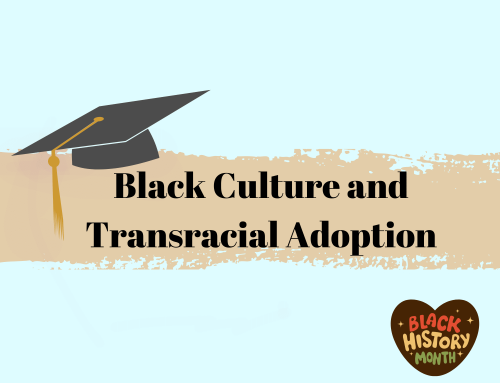The adoption process is more than just the legal process of transferring guardianship from the birth parents to the adoptive parents. It is the creation or expansion of a family. Traditional definitions of a family almost always include just the birth parents.
Today, that definition has expanded to include adoptive parents, creating an adoption triad. But, the actual process of adoption can be traced back to at least biblical times. The Romans, Egyptians, Greeks, and Babylonians all had their own systems of adoption.
Early Practices
During American colonial times, the adoption process was very informal, and consisted of the birth parents simply relinquishing formal responsibility for the child. Why would they do this?
Often, it was done in the hope that the child would receive better care, support, and maybe an education that the birth parents could not afford. However, the reality was that many businesses and wealthy landowners exploited the birth parents so that they could acquire cheap labor.
During that time, indigent parents, or charitable institutions like the Children’s Aid Society, would promote these kinds of placements almost purely for economic reasons. In other words, farm families needed cheap labor – a lot of it.
Children could be paid a very low wage, or no wage at all (because they had virtually no rights), to work on these farms. Eventually, the situation devolved into what we now know as “the orphan trains.”
Many children became indentured servants. Others found adoptive parents but only when the child was included in the will of the estate of the parents. Indentured servitude meant that the child wasn’t actually being adopted. Instead, they were used as a source of labor until they became of legal age.
Unfortunately, many children were treated as property and traded as such.
However, in 1865, the 13th Amendment abolished indenture. The Industrial Revolution also moved crafts out of the home and into factories, where the work environment could be more carefully controlled and where standardization was possible.
A formal adoption process wasn’t legally recognized in the U.S. until the 1850s. This is when the first adoption statutes were written to provide legal guardianship status for adoptive parents, effectively expanding the family structure.
Massachusetts became the first state to implement proper adoption statutes. At that time, prospective adoptive parents were required to make a request to the state, and there had to be judicial approval, consent of the birth parents, and a finding by the court that the prospective adoptive parents were capable of raising the child.
Even with statutes, the law was not enforced or adhered to like it is today. There were no real standards for how or when consent of the birth parents took place, for example. So, there were no safeguards for the birth parents and nothing in the law that ensured consent was informed and voluntary. Also, not all statutes treated the family structure equally.
Some states allowed the children to retain rights to any inheritance from their biological parents. Some states did create suitability standards for prospective adoptive parents, but they weren’t always enforced or, if they were, they were more form than substance.
Finally, the early statutes had no provision for privacy or confidentiality or the maintenance of records. Original birth certificates weren’t altered or sealed in court files so there were no protections for biological or adoptive parents against unwanted intrusions into their personal lives following the adoption process.
A Culture Of Secrecy Develops
During the 1930s, 40s, and 50s, the cultural attitude toward the adoption process was not always a positive one. Social workers began sealing records under the thinking that this would protect the adoption triad.
It wasn’t until the 1930s that the laws started to change to focus on protection of privacy and exclusivity of the adoptive home. Before then, one concern was that children placed for adoption would be kidnapped by the biological parents later on.
Social workers had almost complete control over the adoption placement decisions during that time, too. Their services were aimed at matching prospective adoptive parents with waiting children.
Unfortunately, the services were also very narrowly focused. Adoptive parents were encouraged to “get on with their lives” and forget about the adoption process since it was seen as a legal process and not a permanent one. Often, parents were not given any preparation for the future needs of their child.
As children grew into adults, they had no resources to help them search for, or make contact with, their birth parents. The child’s possible wishes or future expectations were simply never considered. In fact, a pamphlet that was circulated in 1969, titled, “You and Your Adopted Child,” discouraged parents (and children) from attempting to make contact with biological parents. The pamphlet claimed that it would only lead to unhappiness and disillusionment.
Also, during this time, being pregnant without being married was seen as socially unacceptable. This is where the harsh stigmas of the adoption process really began in America. Marriage provided practical benefits too, since not all women worked full time jobs outside of the home. So, a husband could serve as the “breadwinner” for the family.
A Societal Revolution Changes Everything
In the 1960s, America underwent a social transformation. Liberation movements, civil rights movements, and sexual revolution changed everything. During the 1970s, the Adoptee’s Liberty Movement began. Other child-centric laws were also enacted, like the Indian Child Welfare Act.
Circulation and distribution of hormonal birth control for women, and the legalization of abortion, gave women a choice as to whether they became pregnant. It also gave women a choice about carrying an unplanned pregnancy to term.
On top of that, being a single parent wasn’t seen as a social abnormality anymore. So, women that wanted a child, but didn’t want to place the child for adoption, could choose to parent without the stigma of being unwed.
Non-traditional family structures also became more common, changing the very definition of “normal” and “traditional.” Social workers changed their role into one of educators for adoptive parents. They were no longer “gatekeepers,” and the adoption process wasn’t merely a legal formality.
Birth parents and children spoke out about their experiences, adoptive parents demanded more information about their children, and the triad was strengthened.
However, legal issues also arose that challenged some of the older ways of handling the adoption process. During the 1930s, a strong emphasis on “privacy” meant that there was little concern for the rights of biological parents. They simply vanished as a practical matter. So, no explicit termination of rights was necessary. But with a more open and liberal approach to the process, new statutes and regulations needed to delineate the rights of the birth parents and the rights of the adoptive parents. This gave rise to the idea of voluntary termination of parental rights. Birth parents that placed their child for adoption had to relinquish future parental rights to the child, making it a clear and defined process.
It was a way for birth parents to consent to the adoption process and make it a process with a fixed point in time. It wouldn’t be something that would linger on for years and definitely not for the lifetime of the child.
Current Practices
Some agencies today are becoming more open about the adoption process. However, not all states agree as to how it should be handled. Today, the Department of Economic Security handles most adoptions where the waiting child is a victim of abuse, neglect, or abandonment.
However, many private agencies set their own rules based on the laws of the state where they operate. Regardless of whether an agency practices “open” or “closed” adoption practices, the focus is still on the child and the triad, ensuring that placement is in the best interest of the child, that the adoptive parents are capable of raising him or her, and that the birth parents are aware of and consent to any responsibilities during, and after, the process.
Adoptive parent education is also more common, with subsidies helping parents meet the needs of their child. For couples who have never been parents before, this educational process may also include basic parenting skills and information.
The application process can be arduous, however, because agencies often perform background checks and require extensive evidence that the prospective adoptive parents are capable of parenting according to the best interest of the child.
Children who have special needs are also given the special care they need, whether mentally or physically challenged. This often reduces the risk of these children ending up in foster care or in government or private institutions.
At this time, the vast majority of adoptions are coordinated with the sole purpose of creating a positive adoption experience and the best possible outcome for the triad.






Leave A Comment